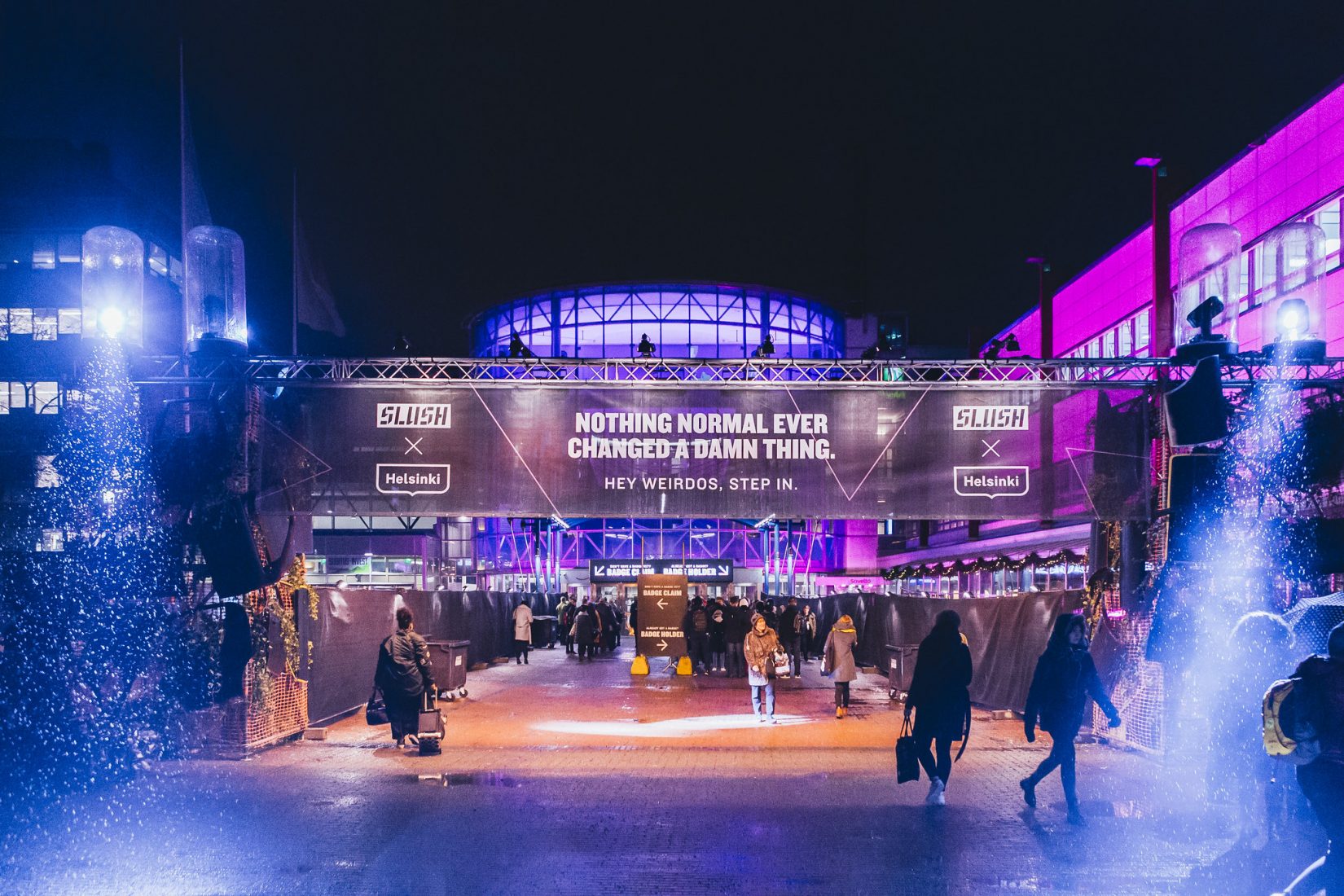How to be sure I enjoyed Slush to the fullest? (1/2)

The Grib team took me to Slush in 2017. If you don’t already know (doubtful), Slush is the biggest startup and tech conference in the Nordics. I had the opportunity to mingle with over 20,000 techies from all over the world in a mere 48 hours! There was actually so much buzz in Helsinki around Slush that I really felt like this was going to be the experience of my life.
You thought the day you got married or had a child was the most meaningful of your life? That’s cute…
And even though I was still wrapped up in a pleasant sensation of thrill and excitement for next 24 hours after it ended, at some point I wanted to recap those two days of pure ecstasy. I wanted to evaluate my experience and figure out if I participated to the fullest for a few reasons.
First of all, the ticket to Slush reflects the high level of hype one can expect when going there. We’re talkin’ 395€ all the way up to 895€. Secondly, while attending inspiring talks, networking like you mean it, and partying hard, it’s difficult to be “productive” (in a short-term perspective of course). You are not de-li-ve-ring. And when the wave of guilt comes crashing down, all you want is to find rational elements proving that the social mayhem you experienced was genuinely worth it.
So how do you do that?
Usually, I start with the good things that happened. I collect them and stack them up like I’m building my own wall of fame. “I met that person, I’ve collected this many business cards, I heard this interesting info I could use to develop my business. etc. Woohoo! Success.” In other words, justification – finding good reasons in hindsight to think that my participation was valuable. And let’s face it, that’s what we all do.
But this methodology is questionable, as are the results. Besides, you’ll have way more valuable insights to get if you operate a slight shift and assess things through another prism.
No future: Do it like a punk
As an online marketing freelancer (not an AI visionary), I went to Slush without any pre-defined and quantifiable goals. It was obviously my first big mistake, and it’s most likely true for many of you, also. You probably know the feeling.
You go somewhere, you (or people you know) spend a ton of money on tickets, flights, hotels, food, and more, you don’t work for a couple of days, and when it’s all over you essentially don’t know why it all happened.
Really?! Yes, really… I just enjoyed the opportunity of going there, following a start-up that I support. My thought process was like this: Let’s have no goal and no expectations about anything because it’s going to be overwhelming, anyway. What a brilliant idea! Don’t think, don’t plan, just live in the moment (#YOLO).
Mirror, mirror on the wall, who’s the fairest of them all?
Subsequently, I was tempted to consider the following KPIs:
- the number of projects I learned about
- the new Linkedin contacts I made
- the people I talked to
- and of course the social media interactions I got
But aren’t those simply vanity metrics? Surely I’ll capture more followers on social media and I’ll get more exposure for my next posts, but does it mean I’ll gain significant and worthwhile connections? Does it mean I’ll catch my target audience’s attention? And if ‘yes’, how soon will this phenomenon fade away as I return to my regular types of posts, not about event buzzwords, such as AI, VR, Bitcoin and so on?
More questions entered my mind:
- How interesting is a contact if I don’t follow up?
- Are the KPIs I’ve selected good for my ego or good for my business?
- Were my personal introductions and explanations mediocre?
- Should I have scheduled more meetings beforehand?
- Did I epically fail because Al Gore himself (the highlight keynote speaker) didn’t stop by to say “Hi” to me and discuss ideas for my next ICO?
- Did I totally miss the opportunity of my life?
Although according to any self-respecting quote website, it’s preferred to “Dream Big” and “Shoot For The Stars”, in my humble opinion, those aren’t the KPIs to be focused on. Instead, you’d better get the global picture based on a sound strategy.
For example, what if your booth wasn’t crowded 24/7, but you thoroughly presented your project and collected a high ratio of qualified contacts? What if you had only four meetings booked through the Slush digital matchmaking tool, but you pitched your start-up in a very skillful way with high energy and attention to the individually unique prospect?
Such positive and hugely beneficial KPIs are often more important than the previous vanity metrics living up in the clouds of a fake tech heaven.
Conclusion: Time-space continuum to the rescue
Here comes the pith and marrow of my story.
Slush starts WAY before the official opening and ends WAY after the official ending. The trick is, the timeframe is up to you. It may start six entire months ahead or it may start at the Messukeskus after-parties. It may start in person or on LinkedIn. It may end when the doors close or after you’ve closed your first deal 10 weeks later.
Only you can define what a fulfilling Slush looks and feels like.
Therefore, it’s greatly meaningful to take some time to gauge how things went and consider what you’ll do similarly or differently next time. To make that easier, here is a Slush-specific personality quiz that’ll work like a charm.
And if you are completely obsessed with the topic, please read also the very thorough and interesting article “Event Marketing 101: 3 Stages for Success” published on Vidalico.com.
